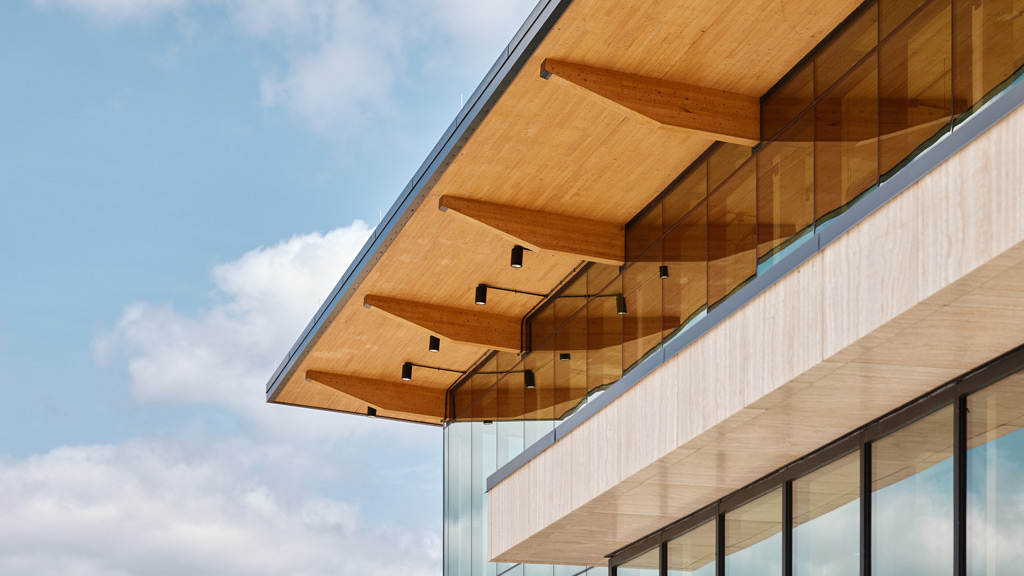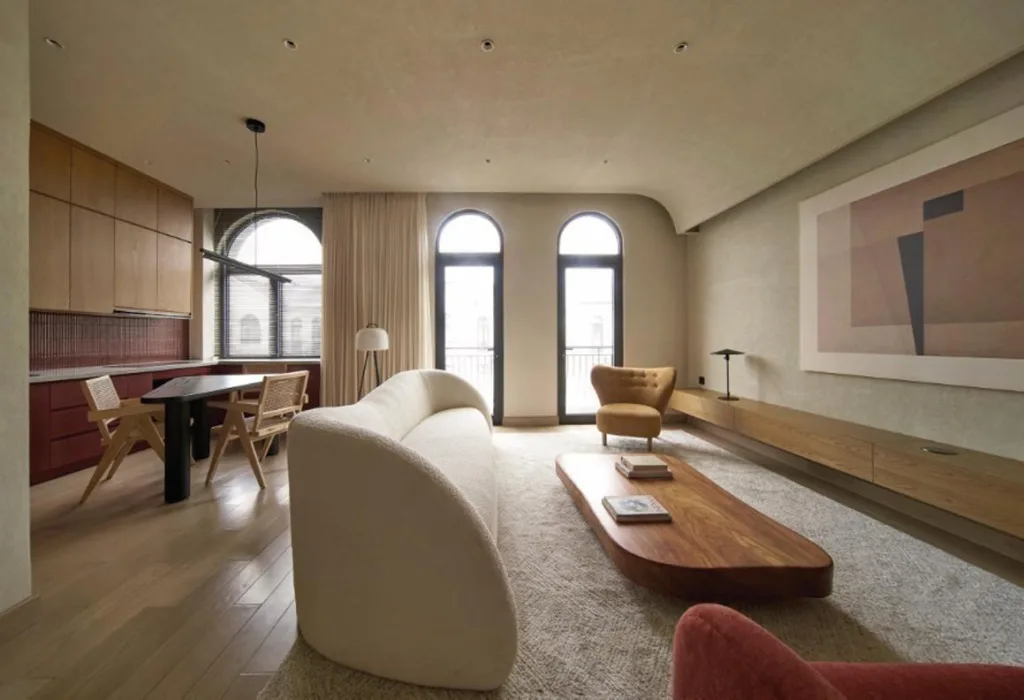News
Using Recycled Wood, Sustainable Materials, Non-Toxic Paint



Exploring Recycled Wood in Greater Detail
Sources of Recycled Wood
Recycled wood comes from multiple origins, each offering unique qualities:
Old Barns and Warehouses: Provide weathered, rustic beams with natural patina.
Shipping Pallets: Lightweight, versatile, and easy to repurpose for shelving or wall panels.
Furniture Factories: Off-cuts and scraps that can be transformed into smaller pieces of décor.
Urban Demolitions: High-quality hardwood salvaged from doors, flooring, or staircases.
Each source has its own story, making recycled wood not just material but a carrier of history and identity.
Treatments for Recycled Wood
Before use, recycled wood must be properly treated to ensure safety and durability. Common processes include:
Kiln Drying: Eliminates moisture and pests.
Sanding and Refinishing: Brings out the natural beauty of the grain.
Eco-Friendly Sealants: Protect the wood without adding toxic chemicals.
This careful preparation transforms old timber into functional, beautiful furniture or architectural details.
Creative Design Applications
Recycled wood goes beyond traditional flooring and tables. Designers increasingly use it for:
Accent Walls: Adding warmth and texture to modern interiors.
Ceiling Beams: Creating rustic charm in both urban lofts and suburban homes.
Custom Shelving: Combining reclaimed wood with metal brackets for industrial chic style.
Kitchen Islands: Blending durability with a sense of timelessness.
Sustainable Materials Shaping the Future
Hemp-Based Composites
Hemp is rapidly emerging as a sustainable powerhouse. When combined with lime, it forms “hempcrete,” a strong yet lightweight building material. Its insulation properties make it perfect for energy-efficient homes.
Recycled Textiles
Old clothing and fabrics are now being transformed into acoustic panels, rugs, and upholstery. This approach reduces landfill waste while promoting a circular economy.
Clay and Natural Plaster
These age-old materials are making a comeback. Clay plasters regulate humidity, absorb toxins, and add earthy aesthetics to walls, especially when paired with non-toxic paints.
Bioplastics
Made from cornstarch or sugarcane, bioplastics are biodegradable alternatives to petroleum-based plastics. They are increasingly used in furniture parts, light fixtures, and even decorative objects.
Health and Lifestyle Benefits of Non-Toxic Paint
Safer for Families
Families with children or elderly members benefit most from switching to non-toxic paint. Kids are especially sensitive to VOCs, and safer paints reduce risks of allergies or asthma.
Better for Indoor Air Quality
Since people spend up to 90% of their time indoors, air quality is crucial. Non-toxic paint helps maintain fresh, clean air, especially in sealed modern buildings.
Enhanced Well-Being
Living in a space free from chemical odors creates psychological comfort. Many homeowners report feeling calmer and more relaxed after switching to non-toxic finishes.
Environmental Impact
Non-toxic paints break down more safely when disposed of, reducing water and soil contamination. This small choice contributes to larger ecological balance.
Practical Tips for Starting Your Eco-Friendly Journey
Start Small
If a full home renovation feels overwhelming, begin with one room. Repaint it with non-toxic paint or add a piece of reclaimed wood furniture.
Mix Old with New
Combine sustainable materials with modern designs. For example, pair a bamboo dining table with contemporary chairs upholstered in recycled textiles.
Research Certifications
Look for trusted certifications when buying materials:
FSC for responsibly sourced wood.
GREENGUARD for low-emission products.
EcoLabel for verified eco-friendly paints.
Budget Smartly
While some eco-materials cost more upfront, consider their longevity and health benefits. A durable reclaimed wood table may last decades, while a cheap alternative could need replacement in a few years.
Work with Local Craftsmen
Supporting local artisans who specialize in recycled and sustainable materials not only boosts local economies but also reduces transportation emissions.
Real-Life Examples of Eco-Friendly Spaces
Eco-Loft in New York: Designed with reclaimed wood beams, bamboo cabinetry, and non-toxic paints, blending industrial charm with modern sustainability.
Minimalist Tokyo Apartment: Features foldable furniture from recycled metals and textiles, saving space while minimizing environmental impact.
Family Home in Scandinavia: Uses cork flooring, clay plaster walls, and eco-paints to create a warm, allergy-free environment.
These examples prove that eco-friendly design can be stylish, practical, and accessible in diverse contexts.
Cultural and Historical Value of Recycled Wood
Recycled wood carries more than environmental benefits; it carries history. When salvaged from old barns, bridges, or warehouses, each piece tells a story. The marks, knots, and natural wear patterns represent decades of use, giving character that cannot be replicated by new lumber.
In many cultures, reclaimed timber is seen as a way to honor tradition. Japanese carpenters, for example, often repurpose wood from ancient temples, preserving not only the material but also the cultural heritage attached to it. In Europe, centuries-old oak beams are given new life in modern apartments, linking past and present.
By choosing recycled wood, homeowners and designers don’t just embrace sustainability—they also integrate cultural storytelling into their living spaces.
Design Versatility of Sustainable Materials
Sustainable materials offer surprising flexibility across different design aesthetics.
Minimalist Spaces: Bamboo furniture and non-toxic white paints create clean, airy environments.
Industrial Interiors: Recycled metal frames paired with reclaimed wood tables bring raw authenticity.
Scandinavian Style: Light woods, cork flooring, and muted eco-friendly paints blend function with warmth.
Luxury Homes: High-end designs can incorporate sustainable marble substitutes, reclaimed hardwood, and plant-based leather.
Sustainability is no longer confined to rustic aesthetics—it adapts seamlessly to both modern and traditional styles.
Scientific Insights into Non-Toxic Paint
Traditional paints release volatile organic compounds (VOCs) for months after application. These chemicals contribute to indoor air pollution, which the World Health Organization links to respiratory diseases and certain cancers.
Non-toxic paints are formulated with natural binders like clay, lime, or plant oils. Many also incorporate mineral pigments, avoiding harmful synthetic dyes. Studies show that low-VOC environments improve cognitive performance, particularly in workplaces and schools.
Switching to non-toxic paints is not just about comfort—it is a scientifically proven step toward healthier living and working conditions.
Eco-Friendly DIY Practices
For homeowners eager to embrace sustainability, DIY projects are a great entry point.
Reclaimed Wood DIY Ideas
Create a coffee table from old pallets.
Build floating shelves from salvaged planks.
Repurpose doors into headboards.
Sustainable Paint Projects
Experiment with limewash or clay-based paints for textured, natural-looking walls. These finishes are breathable and regulate indoor humidity.
Upcycling with Sustainable Materials
Turn old textiles into cushion covers, or repurpose cork tiles into wall décor. The goal is to extend the life of materials while reducing waste.
DIY practices encourage creativity while aligning with eco-friendly principles.
Businesses and Communities Leading the Way
Eco-Friendly Furniture Brands
Many furniture companies are now committed to using recycled wood, sustainable materials, and non-toxic paint. They not only reduce environmental impact but also meet the growing demand for green products.
Green Building Certifications
Certifications like LEED (Leadership in Energy and Environmental Design) and WELL focus on sustainability and health. They encourage developers to integrate recycled and eco-friendly materials in construction projects.
Community Projects
Across the globe, communities are embracing collective recycling programs. Urban neighborhoods in Europe and Asia repurpose wood from demolition sites into public seating, playgrounds, and community centers.
These efforts show how individual choices connect with larger movements toward sustainability.
Lifestyle Integration
Living sustainably does not mean sacrificing comfort or beauty. A home designed with eco-friendly principles feels warm, breathable, and alive. Imagine reclaimed oak floors beneath your feet, walls painted with clay-based colors, and shelves crafted from bamboo or cork. Each element serves a purpose: health, function, and respect for the planet.
The integration of recycled wood, sustainable materials, and non-toxic paint transforms homes into sanctuaries—spaces where beauty and responsibility coexist.
Emotional and Psychological Impact of Eco-Friendly Materials
Design is not only visual; it deeply influences how people feel within a space. Recycled wood, sustainable materials, and non-toxic paints all contribute to emotional well-being.
Recycled Wood: Its natural texture and imperfections create warmth and authenticity, making rooms feel grounded and calming.
Sustainable Materials: Cork, bamboo, and hemp fabrics bring a sense of lightness and balance, connecting inhabitants to nature.
Non-Toxic Paint: Fresh air free from chemical odors promotes relaxation and reduces stress, while natural pigments create soothing atmospheres.
Living in a home with eco-friendly materials can improve mood, reduce anxiety, and foster a stronger sense of belonging.
Case Comparisons: Conventional vs. Sustainable
Flooring Example
Conventional Option: Laminate flooring, made from plastics and adhesives, often releases VOCs. Short lifespan leads to waste.
Sustainable Option: Bamboo or reclaimed wood flooring, durable and renewable, with minimal off-gassing.
Paint Example
Conventional Option: Oil-based paint with high VOC levels, causing lingering chemical odors and indoor pollution.
Non-Toxic Option: Clay or lime-based paint, breathable, safe for children, and resistant to mold.
Furniture Example
Conventional Option: Mass-produced particleboard, often containing formaldehyde.
Sustainable Option: Reclaimed oak dining table finished with non-toxic sealant, durable and timeless.
These comparisons illustrate that sustainable choices are not only healthier but often more durable and cost-effective in the long run.
Holistic Sustainable Design
Eco-friendly living is strongest when all three principles—using recycled wood, sustainable materials, and non-toxic paint—intersect.
Imagine designing a living room where:
Walls are coated with breathable non-toxic paint in calming earth tones.
Shelves and furniture are made from reclaimed wood, adding character and reducing deforestation.
Bamboo rugs, cork panels, and hemp textiles complement the setting, creating a cohesive eco-friendly space.
The holistic approach ensures that every material contributes to health, sustainability, and beauty simultaneously.
Guidelines for Architects, Designers, and Homeowners
For Architects
Prioritize sustainable sourcing from the beginning of projects. Design flexible spaces where recycled wood and eco-materials can be adapted easily.
For Interior Designers
Educate clients about the benefits of non-toxic paints and eco-friendly furniture. Use sustainable materials to create both aesthetic value and functional design.
For Homeowners
Start with incremental steps. Repaint bedrooms with non-toxic paints, replace one major furniture item with reclaimed wood, or add cork flooring in high-use areas. Over time, these changes accumulate into a fully sustainable environment.
Global Movement Toward Sustainability
Europe
Scandinavian countries lead in integrating sustainable wood and eco-friendly paints in both residential and commercial architecture. Government incentives encourage green building practices.
North America
The U.S. and Canada are witnessing a surge in eco-conscious homeowners. Non-toxic paints and reclaimed wood furniture are gaining popularity in urban markets.
Asia
Rapid urbanization has increased awareness of air quality and sustainable design. Japan and South Korea incorporate reclaimed materials to blend tradition with innovation.
Developing Nations
Emerging markets are exploring recycled materials as affordable solutions, turning constraints into opportunities for sustainable development.
The Future Outlook
As sustainability becomes mainstream, innovation will accelerate. Expect to see:
AI-Driven Material Tracking: Ensuring transparency in sourcing and recycling processes.
Hybrid Materials: Combining durability of composites with biodegradability.
Smart Paints: Non-toxic paints infused with air-purifying or antimicrobial properties.
Community-Based Recycling Systems: Local programs where citizens contribute reclaimed wood or textiles for public use.
The trajectory is clear: eco-friendly design is not a passing trend but the foundation of the future.
Challenges and Misconceptions About Eco-Friendly Materials
Despite growing awareness, some homeowners hesitate to embrace recycled wood, sustainable materials, and non-toxic paint due to myths and misconceptions.
One common belief is that eco-friendly products are always more expensive. While initial costs can sometimes be higher, the durability and long lifespan of these materials often save money over time. For example, reclaimed oak furniture may last decades longer than mass-produced alternatives.
Another misconception is that sustainable materials limit design possibilities. In reality, eco-friendly materials are incredibly versatile. From modern bamboo dining tables to rustic reclaimed wood coffee tables and vibrant plant-based paints, sustainable design can fit into any aesthetic.
Finally, some worry about availability. While specialty stores once dominated the market, eco-friendly products are now widely accessible, both online and in mainstream retail chains.
Creative Combinations for Unique Interiors
Sustainability thrives on creativity. By mixing recycled wood, sustainable fabrics, and non-toxic paints, homeowners can craft interiors that are both stylish and eco-conscious.
Imagine a living room where:
A reclaimed wood TV stand anchors the space.
Walls are coated with soft green non-toxic paint, enhancing calmness.
A cork rug sits underfoot, paired with hemp cushions on the sofa.
In bedrooms, bamboo wardrobes finished with non-toxic sealants pair beautifully with clay-painted walls. Offices, meanwhile, benefit from recycled metal shelves combined with reclaimed wooden desks and breathable paints that enhance focus.
These combinations prove that eco-friendly interiors do not have to compromise on luxury or comfort—they can rival or surpass conventional designs.
The Role of Consumers in Driving Change
Every purchase decision sends a signal to the market. When consumers choose recycled wood furniture, non-toxic paints, or cork flooring, they support industries committed to sustainability. This demand pushes manufacturers to innovate, lower prices, and expand availability.
On a community level, consumers can also advocate for sustainable building codes, recycling programs, and public awareness campaigns. When collective voices call for healthier environments, policymakers respond by implementing incentives and regulations that favor eco-friendly practices.
In essence, sustainable living is not just about individual choices—it is about shaping a cultural shift toward greener futures.

